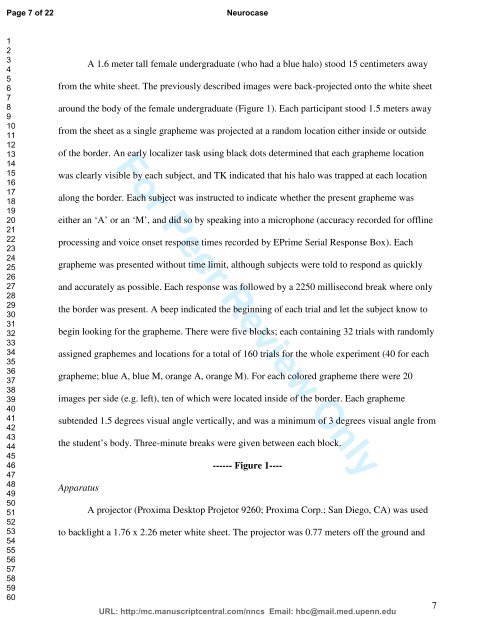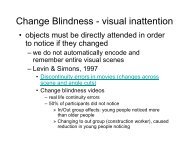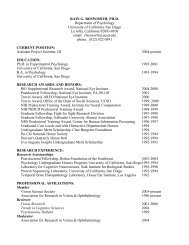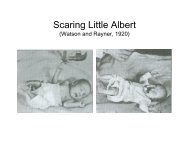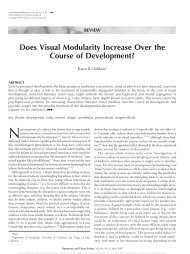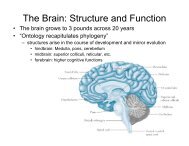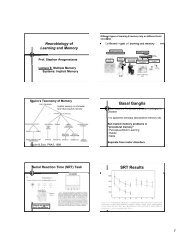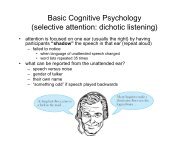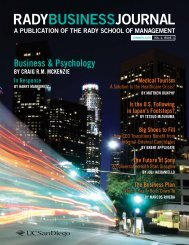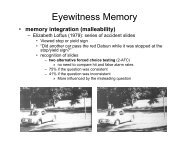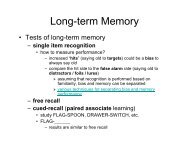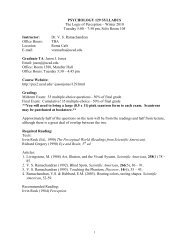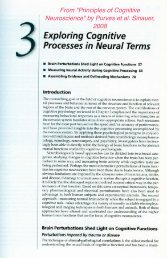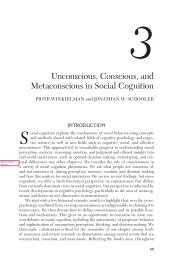For Peer Review Only - Establishing New Traditions
For Peer Review Only - Establishing New Traditions
For Peer Review Only - Establishing New Traditions
You also want an ePaper? Increase the reach of your titles
YUMPU automatically turns print PDFs into web optimized ePapers that Google loves.
Page 7 of 22<br />
1<br />
2<br />
3<br />
4<br />
5<br />
6<br />
7<br />
8<br />
9<br />
10<br />
11<br />
12<br />
13<br />
14<br />
15<br />
16<br />
17<br />
18<br />
19<br />
20<br />
21<br />
22<br />
23<br />
24<br />
25<br />
26<br />
27<br />
28<br />
29<br />
30<br />
31<br />
32<br />
33<br />
34<br />
35<br />
36<br />
37<br />
38<br />
39<br />
40<br />
41<br />
42<br />
43<br />
44<br />
45<br />
46<br />
47<br />
48<br />
49<br />
50<br />
51<br />
52<br />
53<br />
54<br />
55<br />
56<br />
57<br />
58<br />
59<br />
60<br />
A 1.6 meter tall female undergraduate (who had a blue halo) stood 15 centimeters away<br />
from the white sheet. The previously described images were back-projected onto the white sheet<br />
around the body of the female undergraduate (Figure 1). Each participant stood 1.5 meters away<br />
from the sheet as a single grapheme was projected at a random location either inside or outside<br />
<strong>For</strong> <strong>Peer</strong> <strong>Review</strong> <strong>Only</strong><br />
of the border. An early localizer task using black dots determined that each grapheme location<br />
was clearly visible by each subject, and TK indicated that his halo was trapped at each location<br />
along the border. Each subject was instructed to indicate whether the present grapheme was<br />
either an ‘A’ or an ‘M’, and did so by speaking into a microphone (accuracy recorded for offline<br />
processing and voice onset response times recorded by EPrime Serial Response Box). Each<br />
grapheme was presented without time limit, although subjects were told to respond as quickly<br />
and accurately as possible. Each response was followed by a 2250 millisecond break where only<br />
the border was present. A beep indicated the beginning of each trial and let the subject know to<br />
begin looking for the grapheme. There were five blocks; each containing 32 trials with randomly<br />
assigned graphemes and locations for a total of 160 trials for the whole experiment (40 for each<br />
grapheme; blue A, blue M, orange A, orange M). <strong>For</strong> each colored grapheme there were 20<br />
images per side (e.g. left), ten of which were located inside of the border. Each grapheme<br />
subtended 1.5 degrees visual angle vertically, and was a minimum of 3 degrees visual angle from<br />
the student’s body. Three-minute breaks were given between each block.<br />
Apparatus<br />
Neurocase<br />
------ Figure 1----<br />
A projector (Proxima Desktop Projetor 9260; Proxima Corp.; San Diego, CA) was used<br />
to backlight a 1.76 x 2.26 meter white sheet. The projector was 0.77 meters off the ground and<br />
URL: http:/mc.manuscriptcentral.com/nncs Email: hbc@mail.med.upenn.edu<br />
7


